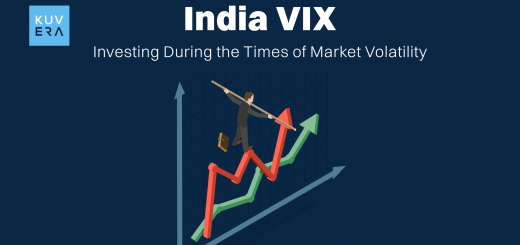Ever wondered what it feels like to invest in a multibagger stock and watch your wealth multiply exponentially? For many investors, spotting that golden opportunity early can be life-changing. While seasoned investors make it sound simple, identifying multibagger stocks isn’t just about luck—it’s about strategy, analysis, and patience.
But how exactly do you identify a multibagger stock, and more importantly, what even is a multibagger stock? Let’s break it down.
What are Multibagger Stocks?
A multibagger stock is a stock that delivers returns several times over its original purchase price. The term “multibagger” was popularized by legendary investor Peter Lynch, who used it to describe stocks that multiplied in value by several times. A stock that has doubled is called a “2-bagger,” while a stock that multiplies by 10 is called a “10-bagger.” Essentially, when you invest in a multibagger stock, you’re looking at a massive return on your initial investment, sometimes as much as 5, 10, or even 20 times your money.
But identifying a multibagger stock before it becomes one is where the magic happens. This is where good research, foresight, and a bit of luck come into play. So how do you spot these potential winners? Let’s dive into the key indicators that help you identify them.
Key Indicators to Identify Potential Multibagger Stocks
There isn’t a magical formula to pick a multibagger stock, but several key indicators can help you narrow down your options.
1. Strong Financials
This is the first checkpoint on your journey to identifying a multibagger stock. Companies that have robust financial health are more likely to become multibaggers. You should look for businesses that:
- Show consistent revenue and profit growth over the years.
- Have strong cash flow and minimal or manageable levels of debt.
- Exhibit high profit margins compared to industry peers.
- Reinvest their earnings back into the company for growth.
A good example is Infosys in the 1990s. During its early days, Infosys showed steady financial growth, healthy profit margins, and consistently reinvested profits to fuel its expansion. Investors who recognised these strong fundamentals early were handsomely rewarded as Infosys turned into a multibagger stock over the years.
2. Innovative Business Model
Many multibagger stocks come from companies that innovate within their sector. These companies aren’t just following the industry—they’re leading it, either through unique business models or game-changing products.
For example, look at companies like Tesla or Apple. Their ability to push boundaries in electric vehicles and consumer technology respectively helped them emerge as multibaggers. Companies that offer something distinct, solve problems in a new way, or introduce a disruptive technology are often poised for long-term growth.
3. Scalability
Scalability is key to identifying a multibagger stock. A business that has the potential to grow quickly without significantly increasing its costs is more likely to offer multibagger returns. Look for companies that can easily expand to new markets, introduce new products, or scale operations without a proportional increase in expenses.
A classic example here is Amazon. Starting as an online bookstore, Amazon scaled rapidly by expanding into numerous product categories, international markets, and innovative services like Amazon Web Services (AWS). Early investors saw their money multiply many times as Amazon turned into a multibagger stock.
4. Low Valuation with High Potential
A multibagger stock often starts its journey with a low valuation, giving it more room to grow. These stocks are usually under the radar of most investors early on, which is why they are often trading at a low price. However, these companies usually show strong growth potential and are often undervalued relative to their future earnings capacity.
In some cases, stocks that belong to emerging industries (think renewable energy, technology, or healthcare) might initially seem overvalued compared to traditional sectors, but their potential for exponential growth in revenue and profits can make them multibagger stocks over time.
How to Find Out a Company’s Growth Potential
Now, let’s get into the nuts and bolts of determining a company’s growth potential.
One effective way to gauge this is by looking at a company’s earnings and revenue trajectory. Companies that consistently report increasing revenues and beat analyst estimates on earnings indicate strong growth potential. However, this requires looking beyond just one or two quarters—focus on long-term trends and ask yourself, “Is this company on a path to sustainable growth?”
For example, consider Tata Consultancy Services (TCS). In the early 2000s, TCS was a company growing rapidly within the IT sector. It continually beat earnings estimates, expanded its business globally, and showed a clear trajectory of increasing revenues. Investors who recognised this growth potential early saw their investments turn into significant multibaggers over time.
Start investing in Index Funds.
Market and Sector Analysis – Why It Matters
So, you’ve identified a company with great potential, but what about the market it operates in? Understanding the broader industry or sector that a company belongs to is just as important as evaluating the company itself.
A business might have excellent fundamentals, but if it operates in a declining industry, its growth could be limited. For instance, if you find a promising company in the typewriter industry (yes, they still exist!), its growth potential would be severely capped due to the shrinking demand for such products.
Sectors that are witnessing technological disruptions or societal shifts often give birth to multibagger stocks. These include industries like:
- Technology: Cloud computing, artificial intelligence, and e-commerce are some of the areas within technology where multibaggers have emerged in recent years.
- Renewable Energy: With the world shifting towards sustainable energy, companies in solar, wind, and green tech are growing rapidly.
- Healthcare and Biotechnology: The demand for new treatments, drugs, and health solutions has created opportunities for multibaggers.
Conducting a PEST (Political, Economic, Social, Technological) analysis of the sector will help you gauge whether the market environment supports growth for a potential multibagger stock.
Importance of Leadership and Management
Behind every multibagger stock, you’ll typically find a visionary leader or a strong management team. This is because good leadership drives innovation, creates a strong company culture, and ensures strategic growth.
Take Elon Musk at Tesla, for example. His relentless drive for innovation in electric vehicles and renewable energy solutions has been one of the main catalysts behind Tesla’s incredible growth as a multibagger stock. Likewise, companies with a management team that has a strong track record of turning ideas into profits are usually better bets for long-term growth.
Ratios and Valuation Metrics to Look For
Now that we’ve covered the qualitative aspects, let’s move to the numbers. Several financial ratios can help you identify a multibagger stock:
1. Price-to-Earnings (P/E) Ratio
The P/E ratio tells you how much investors are willing to pay for each rupee of earnings. A lower-than-average P/E ratio, coupled with strong earnings growth, often signals that a company is undervalued and has potential for growth.
2. Price-to-Book (P/B) Ratio
The P/B ratio compares a stock’s market price to its book value (assets minus liabilities). A low P/B ratio relative to industry peers, combined with strong fundamentals, can signal an undervalued stock with room to grow.
3. Return on Equity (ROE)
ROE measures how efficiently a company is using its equity to generate profits. A high ROE indicates that the company is using its resources well, which often correlates with strong future growth.
What is Pitrioski Score and How Does it Help Analyse Multibagger Stocks?
The Piotroski Score is a financial metric designed to assess a company’s financial health by evaluating nine key factors across profitability, leverage, liquidity, and operating efficiency. It assigns a score from 0 to 9, with higher scores indicating stronger financial fundamentals. When it comes to multibagger stocks, the Piotroski Score helps investors identify undervalued companies that are improving their financial stability and operational performance. By highlighting companies with solid fundamentals that may be overlooked by the market, the Piotroski Score aids in pinpointing stocks with potential for significant long-term growth.
Limitations of Multibagger Stocks: What to Be Careful Of
While the allure of multibagger stocks is strong, it’s essential to be aware of potential pitfalls.
1. Overvaluation
Sometimes, a stock that shows multibagger potential can already be overvalued due to market hype. Jumping in too late might mean paying a high price for limited future growth.
2. Market Sentiment
Multibagger stocks are often subject to market speculation. While speculation can drive prices up in the short term, it’s important to base your investment decisions on solid fundamentals rather than following the herd.
3. Volatility
Many multibagger stocks belong to emerging industries or growth sectors, which means they are often more volatile than well-established companies. Be prepared for short-term fluctuations and be willing to hold your position for the long haul.
Top Multibagger Stocks with Phenomenal Returns Over the Past 10 Years
While historical performance isn’t a guarantee of future gains, studying successful multibagger stocks can offer valuable insights into what to look for in potential high-growth investments. Here are some of India’s standout multibagger stocks from the past decade
1. Bajaj Finance
One of the most celebrated multibaggers, Bajaj Finance delivered astronomical returns. From trading around ₹70 in 2011, the stock soared to over ₹7,000 by 2024, offering over 100 times returns. With strong management and an aggressive growth strategy in the consumer finance space, Bajaj Finance became a leader in its sector.
2. Avanti Feeds
This shrimp feed manufacturer was a dark horse in the stock market. Between 2011 and 2021, Avanti Feeds saw its stock price surge from approximately ₹10 to over ₹600, providing investors with a staggering 60x return. Its growth was fuelled by the booming demand in the aquaculture industry and its ability to capture market share.
3. Page Industries
Best known as the exclusive licensee of Jockey Innerwear in India, Page Industries’ stock price skyrocketed from about ₹500 in 2011 to over ₹41,850 by 2024. This translates to a jaw-dropping 80x return, driven by its market dominance in the innerwear sector and consistent growth in consumer demand.
4. Titan Company
A household name in watches and jewellery, Titan has been a wealth creator for its investors. The stock price climbed from around ₹200 in 2011 to over ₹3,456 by 2024, representing more than 17 times growth. Its ability to innovate and diversify its product lines helped Titan remain a top player in the lifestyle segment.
5. Eicher Motors
Eicher Motors, the parent company of Royal Enfield, saw an extraordinary rise. From around ₹200 in 2009 to over ₹30,000 by 2014, this 150x multibagger delivered exceptional returns to its early investors. Its success stemmed from the cult popularity of Royal Enfield motorcycles and the company’s smart positioning in the premium bike market.
These stocks may come from varied sectors like finance, consumer goods, and manufacturing, but they all share certain critical success factors—solid financials, visionary management, and the ability to seize emerging market opportunities.
Wrapping Up
Identifying a multibagger stock requires careful analysis, a long-term perspective, and an understanding of both the company and the broader market it operates in. Look for strong financials, scalable business models, innovative products, and capable leadership.
Combine that with your own diligence, and you just might land yourself the next big multibagger.
Interested in how we think about the markets?
Read more: Zen And The Art Of Investing
Watch here: Is UPI Killing the Toffee Business?












